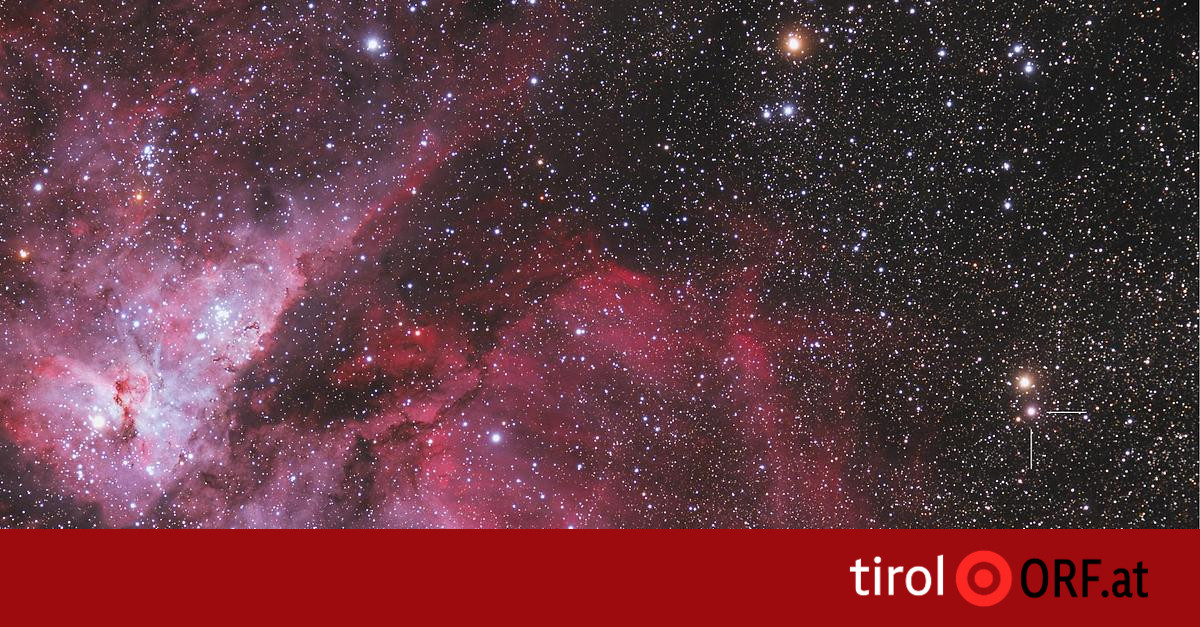When Rainer Kuschnig from Graz University of Technology checked the recordings of five small satellites two years ago, he noticed a star that had never been there before. It was the initial stage of a star explosion. Due to the accidental discovery, the outbreak could be observed by the satellites even before its peak and until many weeks later.
The star exhibition 13,000 light years away in the constellation Carina (ship’s keel), which can only be observed from further south, provided new answers. The event was documented between March and July 2018.
Little star sucked on the big one
The explanation concept for such an explosion, also called Nova, was also confirmed. In this case, a relatively small star, a “white dwarf” had sucked matter from its much larger companion, a “red giant”, and stored it on its surface. As a result, the gas pressure became higher and there was an explosion, in which hydrogen was burned and huge shock fronts were created. In addition to the light burst, high-energy gamma and X-rays were also produced.

The outbreak of satellites from the BRITE constellation was observed with the participation of researchers from TU Graz and the universities of Innsbruck and Vienna. The mission is scientifically led by Konstanze Zwintz from the Innsbruck Institute for Astro and Particle Physics. It was immediately clear to them that the observation of the Nova was a unique observation material available worldwide.

“This fortunate circumstance was decisive for the fact that the nova event could be captured with unprecedented precision,” explains Prof. Konstanze Zwintz, head of the BRITE Science Team, from the Institute for Astro and Particle Physics at the University of Innsbruck. For Zwintz it was immediately clear “that we had a unique observation material available worldwide.”
Satellites observe relatively bright stars
The BRITE constellation is an ensemble of small satellites that record the light of selected stars in the sky with high precision using photometry. From a height of about 800 km, the BRITE constellation observes stars with sizes between 0 and 6 in optical light, whereby the weakest stars would just be visible to the naked eye under excellent observation conditions. Typically, 15 to 20 stars are measured continuously in a 24 square degree field for about half a year – an area as large as e.g. the entire constellation of Orion or the great chariot.
The BRITE constellation was initiated with the launch of the first two Austrian satellites, BRITE-Austria / TUGSAT-1 and UniBRITE in 2013. Poland and Canada each connected a pair of identical satellites in 2014. BRITE-Constellation has since examined more than 660 of the brightest stars in the sky.
–


